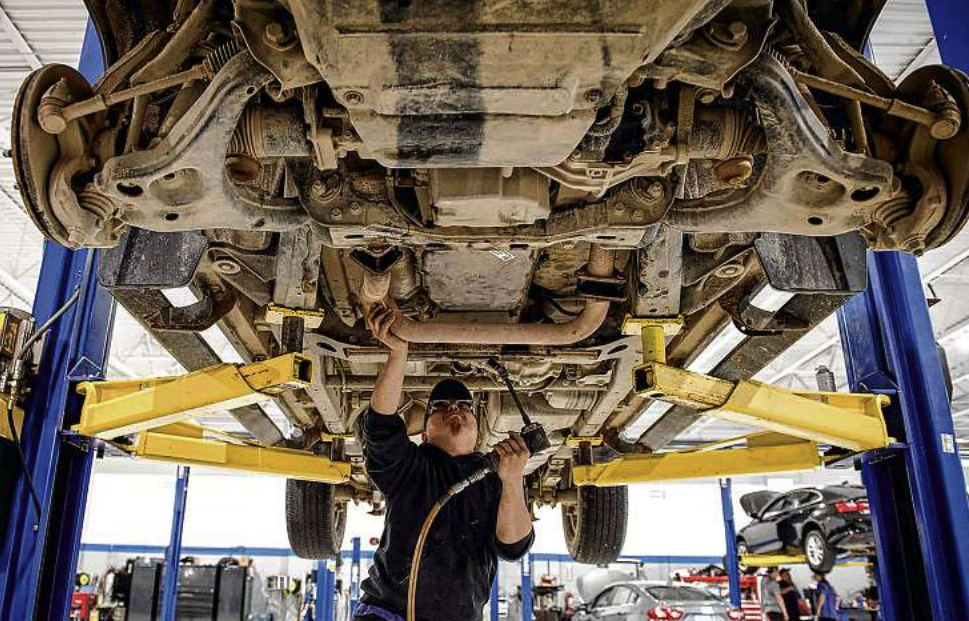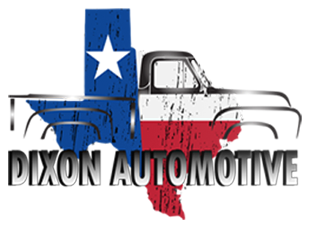VIV Builder • January 17, 2023
Healthcare 101
- Health insurance and Healthcare continue to skyrocket each and every year. There are many factors that lead to this but the basics are all the same. As I shared, IF we want to bend the healthcare cost curve we will need to purchase health insurance differently and healthcare differently as well. This is accomplished with our Good, Better Best approach.
- The four drivers of health care cost are:
- Hospital: (In-patient stays and Emergency Care) 30%
- Pharmacy: (Prescription Drugs) 27%
- Physician: (Primary Care, Specialty Care) 20%
- 4.Outpatient Surgery: 20%
- Today, employees (and even some shop owners) find themselves confused, frustrated or mad about the insurance market and the overall healthcare experience today. Too many choices means no one knows what to do, health plans are not the easiest to navigate which causes frustration and when a health care concern does not work out the way it was supposed to in terms of outcome or out of pocket cost people get angry.
- Medical Loss Ratio (MLR) is one of the key drivers, based on the four cost drivers above, for premiums going up each and every year. MLR, for a small shop owner means that 80% of all premiums must be paid out in claims. That leaves only 20% for the health plan to pay all salaries, operating expenses, commissions and other fees. When premiums were $100 a month for an individual and $250 for a family, yes that was a long time ago but this is a math exercise, there is not much money left at the end pf the month like our family budget. I am hearing premiums for full family coverage at $1,800, $2,200, $2800, and even higher for some regions of the country. This has happened since 2010 and the passing of the Affordable Care Act.
- If pharmacy expenses, prescription drugs is 27% of the total cost of care, why does every health plan OWN the PBM’s that control prescription drugs. Aetna is owned by CVS. Express Scripts is owned by Humana. United Health owns OptumRX. Humana owns Humana Pharmacy Solutions. Who is guarding the hen house?
- An Affordable Care Act (ACA) plan is controlled by every state insurance commissioner which means you cannot sell the products across state lines like Amazon for the same price and the same benefits. An ERISA plan is an ACA compliant but able to be sold in every state for the same price and the same benefits because an ERISA plan has government oversight by the Department of Labor, the same government department that oversees 401k, 403b, Workers Comp and Self-Funded health plans. This is how you purchase health insurance differently.
- Health insurance is built on two buckets of money, administrative expenses and healthcare costs. No matter the health plan type you have, it is handled all the same. All of this is combined into your health insurance premiums. Where it gets dicey is with the healthcare bucket of money and who navigates the healthcare decision of cost and quality. If you know what the cost drivers are, you can find the best care at the lowest cost. If you do not know those things, you will not always make the right choice for cost and quality. You, your employees and all dependents need an advocate to help you along your healthcare journey to find the best care at the appropriate cost and not pay $5,000 for an MRI when you could have gone across the street for $250. The cost and quality of care differs in every town and even inside a every hospital for every procedure.
- Shopping for healthcare is NOT like shopping for a new engine, a new computer, a new house or anything else for that matter including a meal for you and your family. Would you go to a restaurant where you consume your meal, your adult beverage and your dessert and the servers says let me run your credit card and in a few weeks you will receive an itemized statement for the meal which will include the charge for the use of the restaurant, the table, the tablecloth, each napkin, each food item, each beverage, the server, the chef and even the dishwasher and the amount will be charged to your card at that time? Never in a million years, right? You do this every day with healthcare. It does not have to be that way.
- The average deductible in the US is $5,800 for an individual per year.
- A high deductible health plan could force your employees to put off care, even not talking with you about it, and causing them harm or a greater expense in the long run. We need health plans with no co-pays or very low co-pays and help your employees get the care they need for the price they can afford.
- A health plan that becomes your employees advocate (830) 741-2886 that also is able to offer services for on the job or off the job healthcare means your company checkbook can also be helped by reducing your eMod score for your next years rate renewal. There are plenty of worker comp “factories” that want the employees coming back for care long past the time required. Reducing your eMod score and managing the $250 MRI will keep your premiums at the lowest AND give your employees the best healthcare experience.
- The lowest cost MRI is the one that is not needed. Like the Liberty Insurance commercial, “Only pay for what you need” is also the best approach in healthcare. The lowest cost surgery is also the one not needed. Second opinions for a surgical procedure does not mean second guessing. It is like cutting a piece of wood. Measure twice, cut once.
- When I had my double knee replacement in 2015, yes both knees on the same day, took me about 30 days to research the twelve physicians and twelve surgical centers to determine where to go for my “hopefully” once in a lifetime procedure. The cost estimates were $28,000 all the way up to $128,000 and everywhere in between. The quality measures were all over the board as well. I used a technology tool to help me navigate and negotiate the best price AND the best outcome. You too should have that ability for every surgical procedure. The results speak for themselves.
- Health insurance and healthcare does not have to be that hard. Many in our industry try to make it so, kind of like my good friend the doublespeak professional where we do not understand a word they are saying.
- The difference between an HMO, PPO, Narrow network plan, indemnity plan, limited benefits plan, medical cost sharing plan, health sharing plans, level self-funded plans, fully insured plans and ERISA plans all have advantages and disadvantages. It is best to work with an advisor that has experience with all types.
- Our team does partner with local brokers where appropriate if there is a relationship you would like to keep. We also will work with a shop and become your advisor and maintain your current health plan if you are not getting the service you need or the answer to your questions in plain English.
- Finally, don’t take my word for any of this, let me prove it to you.

By Nora Eckert
•
July 20, 2023
The Wall Street Journal, 1 July, 2023 RONNIE CLENDENIN has been working in the auto-repair business for three decades. He’s never been so frazzled. The parking lot at Clendenin’s Tire and Auto Service in Guy, Ark., a town about an hour north of Little Rock, was recently packed with 62 vehicles, double the typical workload from a few years ago. Without the workers or car parts he needs to keep up, Clendenin says, he regularly turns away loyal customers. “It’s hard to do. People aren’t used to it,” he says. “They’re used to just dropping it off and getting it taken care of.” Across the U.S., a shortage of car parts in the past few years has collided with a continuing dearth of service technicians. The result: more frustrated customers, who are waiting longer to get their cars back, and paying more for service. The backlog risks becoming a drag on the U.S. economy as higher repair costs prompt consumers to cut back spending elsewhere, or simply not having a working car curtails their mobility and productivity. A swath of service industries are facing labor shortages, from home construction to restaurants, appliance repair to trucking. For the big automakers, this is the latest sign that the industry is still struggling to adapt to the shifts from the last few years. Nearly everything about shopping for and owning a car is different since the Covid-19 pandemic: Americans wait to get the car they want instead of driving it off the lot, they have fewer choices, and discounts or cheap leases are a thing of a past, prepandemic life.

By Kaesar Ocado
•
July 16, 2023
In the face of rising healthcare costs and the need for accessible coverage, IGO Benefits has taken the initiative to establish a comprehensive health care program designed to cater to the health insurance demands of IGO's mechanics, their support staff, and their family members across the United States. The program aims to provide Americans with the best access to healthcare, virtual and in-person care options, and concierge care throughout their healthcare journey.

By Kaesar Ocado
•
July 2, 2023
The Affordable Care Act (ACA) has significantly transformed the healthcare landscape in the United States. As ACA insurance costs continue to rise , employers are exploring alternative options, such as private health insurance, to provide employee benefits. In this analysis, we will assess the financial impact of ACA premiums on employee-employer benefits and compare them with the benefits offered by private health insurance. By examining various factors, including cost, coverage options, network accessibility, customization, provider choices, employee satisfaction, and long-term viability, we aim to provide insights into the advantages and considerations of private health insurance for employers and employees.

By VIV Builder
•
March 1, 2023
Independent Garage Owners, IGO's, are a unique group of individuals. Many became shop owners because of their previous working environment, a tyrant for a boss, the visions of grandeur of being their own boss or the ability to do all of the above and train up the next generation to continue their legacy. I have met with, talked with, "Zoomed" with and reached out to via e-mail, social media and direct marketing to IGO's across the country. The things I love about IGO's are this. They are good people. They care about their community. They truly serve their clients trying to do a great job under many stresses and strains of managing a business. Customers can be brutal. A business colleague once shared with me this quip. "If it weren't for our customers, this would be a great business". to which I replied. Customers are what drive the business. Customers ring the cash registers and taking care of customers is what builds a legacy company. I have found these IGO's fall into three categories when it comes to managing their business and attracting and retaining the best talent for their shop. Some shop owners provide no benefits and believe they offer a competitive wage. Some also provide limited benefit plans that are not Affordable Care compliant but adequate for the price. Finally, there IGO's that provide a full benefits plan, wanting to do the right thing with High Deductible Health plan (HDHP) for them and their employees. The first two choices will in many cases result in the employee moving to a new IGO or a dealership, school district or other option because they are providing a benefits package when the employee faces a healthcare concern with themselves or their family. There is another factor that many have not thought of. Employees will put off care, in many cases for themselves, but not their family. This results in delaying care because of the cost and only delaying the expense in many cases. What is interesting is the exact same thing happens with the High Deductible Health Plan where a $5,000 deductible is not laying around in their checkbook waiting for a rainy day. The shop employee will put off care, primarily for themselves, when a large expense would need to be incurred for a healthcare procedure. That is when there will be some medical debt, just not as much as not having insurance at all. The end result for many of the IGO shop employees, in all three of the above scenarios, will get the care they or their family need and incur medical debt. This may break the family piggybank, break their spirit or break up the family because the medical debt brought on other stresses or strains of life. Those options need to be dealt with upfront. The solution is a new approach to healthcare and health insurance. Doing the same thing over and over expecting different results is the definition of insanity. Our approach to doing things different is really simple. We do not sell an Affordable Care Act product. We sell products that are Affordable Care Act compliant. There is a significant difference. We are able to work with our shop owners and meet their budget needs, meet their employees needs and provide greater access to healthcare, lower cost healthcare, lower premiums and lower out of pocket maximums for your team. Together, our solutions allow you to remove the wheels from your mechanics toolboxes. We have learned that when your mechanic do not remove the wheels, they are not staying put. We need them to remove those wheels because of the programs we bring to the table. The solution is a new approach to healthcare and health insurance. The following information will give you some basic knowledge. Health insurance and Healthcare continue to skyrocket each and every year. There are many factors that lead to this but the basics are all the same. As I shared, IF we want to bend the healthcare cost curve we will need to purchase health insurance differently and healthcare differently as well. This is accomplished with our Good, Better Best approach. The Four drivers of healthcare are: Hospital Care (In-patient): 30% Pharmacy (Prescription Drugs) 27% Physician (Primary and Specialty Care) 20% Out-Patient Surgery: 20% Today, employees (and even some shop owners) find themselves confused, frustrated or mad about the insurance market and the overall healthcare experience today. Too many choices means no one knows what to do, health plans are not the easiest to navigate which causes frustration and when a health care concern does not work out the way it was supposed to in terms of outcome or out of pocket cost people get angry. Medical Loss Ratio (MLR) is one of the key drivers, based on the four cost drivers above, for premiums going up each and every year. MLR, for a small shop owner means that 80% of all premiums must be paid out in claims. That leaves only 20% for the health plan to pay all salaries, operating expenses, commissions and other fees. When premiums were $100 a month for an individual and $250 for a family, yes that was a long time ago but this is a math exercise, there is not much money left at the end pf the month like our family budget. I am hearing premiums for full family coverage at $1,800, $2,200, $2800, and even higher for some regions of the country. This has happened since 2010 and the passing of the Affordable Care Act. If pharmacy expenses, prescription drugs is 27% of the total cost of care, why does every health plan OWN the PBM’s that control prescription drugs. Aetna is owned by CVS. Express Scripts is owned by Humana. United Health owns OptumRX. Humana owns Humana Pharmacy Solutions. Who is guarding the hen house? An Affordable Care Act (ACA) plan is controlled by every state insurance commissioner which means you cannot sell the products across state lines like Amazon for the same price and the same benefits. An ERISA plan is an ACA compliant but able to be sold in every state for the same price and the same benefits because an ERISA plan has government oversight by the Department of Labor, the same government department that oversees 401k, 403b, Workers Comp and Self-Funded health plans. This is how you purchase health insurance differently. Health insurance is built on two buckets of money, administrative expenses and healthcare costs. No matter the health plan type you have, it is handled all the same. All of this is combined into your health insurance premiums. Where it gets dicey is with the healthcare bucket of money and who navigates the healthcare decision of cost and quality. If you know what the cost drivers are, you can find the best care at the lowest cost. If you do not know those things, you will not always make the right choice for cost and quality. You, your employees and all dependents need an advocate to help you along your healthcare journey to find the best care at the appropriate cost and not pay $5,000 for an MRI when you could have gone across the street for $250. The cost and quality of care differs in every town and even inside a every hospital for every procedure. Shopping for healthcare is NOT like shopping for a new engine, a new computer, a new house or anything else for that matter including a meal for you and your family. Would you go to a restaurant where you consume your meal, your adult beverage and your dessert and the servers says let me run your credit card and in a few weeks you will receive an itemized statement for the meal which will include the charge for the use of the restaurant, the table, the tablecloth, each napkin, each food item, each beverage, the server, the chef and even the dishwasher and the amount will be charged to your card at that time? Never in a million years, right? You do this every day with healthcare. It does not have to be that way. The average deductible in the US is $5,800 for an individual per year. A high deductible health plan could force your employees to put off care, even not talking with you about it, and causing them harm or a greater expense in the long run. We need health plans with no co-pays or very low co-pays and help your employees get the care they need for the price they can afford. A health plan that becomes your employees advocate (830) 741-2886 that also is able to offer services for on the job or off the job healthcare means your company checkbook can also be helped by reducing your eMod score for your next years rate renewal for Workers Compensation. There are plenty of worker comp physician “factories” that want your employees coming back for care long past the time required. Reducing your eMod score and managing the $250 MRI will keep your premiums at the lowest possible cost AND give your employees the best healthcare experience. The lowest cost MRI is the one that is not needed. Like the Liberty Insurance commercial, “Only pay for what you need” is also the best approach in healthcare. The lowest cost surgery is also the one not needed. Second opinions for a surgical procedure does not mean second guessing. It is like cutting a piece of wood. Measure twice, cut once. When I had my double knee replacement in 2015, yes both knees on the same day, took me about 30 days to research the twelve physicians and twelve surgical centers to determine where to go for my “hopefully” once in a lifetime procedure. The cost estimates were $28,000 all the way up to $128,000 and everywhere in between. The quality measures were all over the board as well. I used a technology tool to help me navigate and negotiate the best price AND the best outcome. You too should have that ability for every surgical procedure. The results speak for themselves. Health insurance and healthcare does not have to be that hard. Many in our industry try to make it so, kind of like my good friend the doublespeak professional where we do not understand a word they are saying. The difference between an HMO, PPO, Narrow network plan, indemnity plan, limited benefits plan, medical cost sharing plan, health sharing plans, level self-funded plans, fully insured plans and ERISA plans all have advantages and disadvantages. It is best to work with an advisor that has experience with all types. Our team does partner with local brokers where appropriate if there is a relationship you would like to keep. We also will work with a shop and become your advisor and maintain your current health plan if you are not getting the service you need or the answer to your questions in plain English. Finally, don’t take my word for any of this, let me prove it to you.
CONTACT US
HOURS
Mon - Thursday: 8 am - 5 pm
Friday: 8:30 am - 5 pm
Closed: 12 pm - 1 pm
Weekends: Closed
© 2025
All Rights Reserved | Dixon Automotive


